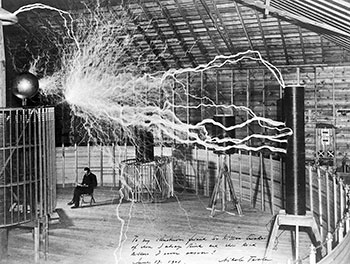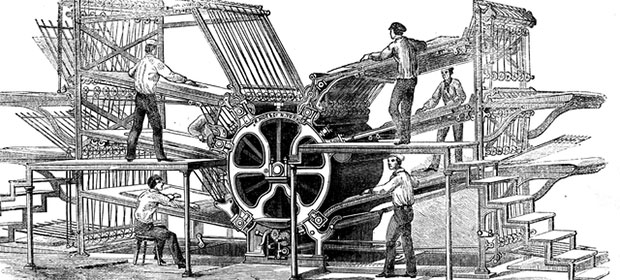"enterprise data" entries

Kristian Hammond on truly democratizing data and the value of AI in the enterprise
The O'Reilly Radar Podcast: Narrative Science's foray into proprietary business data and bridging the data gap.
Subscribe to the O’Reilly Radar Podcast to track the technologies and people that will shape our world in the years to come.
In this week’s episode, O’Reilly’s Mac Slocum chats with Kristian Hammond, Narrative Science’s chief scientist. Hammond talks about Natural Language Generation, Narrative Science’s shift into the world of business data, and evolving beyond the dashboard.
Here are a few highlights:
We’re not telling people what the data are; we’re telling people what has happened in the world through a view of that data. I don’t care what the numbers are; I care about who are my best salespeople, where are my logistical bottlenecks. Quill can do that analysis and then tell you — not make you fight with it, but just tell you — and tell you in a way that is understandable and includes an explanation about why it believes this to be the case. Our focus is entirely, a little bit in media, but almost entirely in proprietary business data, and in particular we really focus on financial services right now.
You can’t make good on that promise [of what big data was supposed to do] unless you communicate it in the right way. People don’t understand charts; they don’t understand graphs; they don’t understand lines on a page. They just don’t. We can’t be angry at them for being human. Instead we should actually have the machine do what it needs to do in order to fill that gap between what it knows and what people need to know.

Training in the big data ecosystem
The O'Reilly Radar Podcast: Paco Nathan and Jesse Anderson on the evolution of the data training landscape.
Subscribe to the O’Reilly Radar Podcast to track the technologies and people that will shape our world in the years to come.
 In this week’s Radar Podcast, O’Reilly’s Ben Lorica talks to Paco Nathan, director of O’Reilly Learning, and Jesse Anderson, technical trainer and creative engineer at Confluent.
In this week’s Radar Podcast, O’Reilly’s Ben Lorica talks to Paco Nathan, director of O’Reilly Learning, and Jesse Anderson, technical trainer and creative engineer at Confluent.
Their discussion focuses on the training landscape in the big data ecosystem, their teaching techniques and particular content they choose, and a look at some expected future trends.
Here are a few snippets from their chat:
Training vs PowerPoint slides
Anderson: “Often, when you have a startup and somebody says, ‘Well, we need some training,’ what will usually happen is one of the software developers will say, ‘OK, I’ve done some training in the past and I’ll put together some PowerPoints.’ The differences between a training thing and doing some PowerPoints, like at a meetup, is that a training actually has to have hands-on exercises. It has to have artifacts that you use right there in class. You actually need to think through, these are concepts, these are things that the person will need to be successful in that project. It really takes a lot of time and it takes some serious expertise and some experience in how to do that.”
Nathan: “Early on, you would get some committer to go out and do a meetup, maybe talk about an extension to an API or whatever they were working on directly. If there was a client firm that came up and needed training, then they’d peel off somebody. As it evolved, that really didn’t work. That kind of model doesn’t scale. The other thing too is, you really do need people who understand instructional design, who really understand how to manage a classroom. Especially when it gets to any size, it’s not just a afterthought for an engineer to handle.” Read more…

Improving corporate planning through insight generation
Data storage and management providers are becoming key contributors for insight as a service.
 Contrary to what many believe, insights are difficult to identify and effectively apply. As the difficulty of insight generation becomes apparent, we are starting to see companies that offer insight generation as a service.
Contrary to what many believe, insights are difficult to identify and effectively apply. As the difficulty of insight generation becomes apparent, we are starting to see companies that offer insight generation as a service.
Data storage, management and analytics are maturing into commoditized services, and the companies that provide these services are well-positioned to provide insight on the basis not just of data, but data access and other metadata patterns.
Companies like DataHero and Host Analytics [full disclosure: Host Analytics is one of my portfolio companies] are paving the way in the insight-as-a-service space. Host Analytics’ initial product offering was a cloud-based Enterprise Performance Management (EPM) Suite, but far more important is what they are now enabling for the enterprise: they have moved from being an EPM company to being an insight generation company. In this post, I will discuss a few of the trends that have enabled insight as a service (IaaS) and discuss the general case of using a software-as-a-service (SaaS) EPM solution to corral data and deliver insight as a service as the next level of product.
Insight generation is the identification of novel, interesting, plausible and understandable relations among elements of a data set that a) lead to the formation of an action plan and b) result in an improvement as measured by a set of KPIs. The evaluation of the set of identified relations to establish an insight, and the creation of an action plan associated with a particular insight or insights, needs to be done within a particular context and necessitates the use of domain knowledge. Read more…

A “bottom-up” approach to data unification
How machine learning plus expert sourcing can unify customer data at scale.
Watch the free webcast Integrating Customer Data at Scale to learn how Toyota Motor Europe was able to unify its customer data at scale.
Enterprises that are capable of gaining a unified view of their customer data can achieve added business enhancements and user opportunities. Capturing customer data, however, can be a difficult task, as most systems rely on traditional “top-down” approaches to standardizing data. In a recent O’Reilly webcast, Integrating Customer Data at Scale, Tamr field engineer Alan Wagner hosts a Q&A session with Matt Stevens, the general manager at Toyota Motor Europe, to demonstrate how a leading enterprise uses a third-generation system like Tamr to simplify the process of unifying customer data.
In the webcast, Stevens explains how Toyota Motor Europe has gained a 360-degree view of their customers through the Tamr Data Unification Platform, which takes a machine learning and expert-sourcing “human guided workflow” approach to data unification. Wagner provides a demo of the Tamr platform, applied within a Salesforce application, to demonstrate the ability to capture and unify customer data. Read more…

Hadoop for business: Analytics across industries
The O’Reilly Podcast: Ben Sharma on the business impact of Hadoop and the evolution of tools
In this episode of the O’Reilly Podcast, O’Reilly’s Ben Lorica chats with Ben Sharma, CEO and co-founder of Zaloni, a company that provides enterprise data management solutions for Hadoop. Sharma was one of the first users of Apache Hadoop, and has a background in enterprise solutions architecture and data analytics.
Before starting Zaloni, Sharma spent many years as a business consultant and began to see that companies across industries were struggling to process, store, and extract value from their data. Having worked extensively in telecom, Sharma helped equipment vendors deploy large-scale network infrastructures at carriers across the world. He began to see how Hadoop could have an impact in the business analytics aspect of companies, not just in IT.
In this interview, Lorica and Sharma discuss the early days of Hadoop and how businesses across industries are benefitting from Hadoop. They also discuss the evolution of tools in the space and how more companies are moving toward real-time decision-making with the growth of streaming tools and real-time data. Read more…

Big Data: The Ultimate Computing Platform
From interconnected hardware and software platforms to engineering and product development platforms, big data is DIY supercomputing.
This post originally published as a chapter from the free Radar report, Disruptive Possibilities: How Big Data Changes Everything.
Introduction to Platforms
A platform is a collection of sub-systems or components that must operate like one thing. A Formula One racing vehicle (which drivers refer to as their platform) is the automobile equivalent of a supercomputer. It has every aspect of its design fully optimized not simply for performance, but performance per liter of gas or kilogram of curb weight. A 2-litre engine that creates 320HP instead of 140HP does so because it is more efficient. The engine with higher horsepower does have better absolute performance, but performance really means efficiency—like HP/KG and miles/gallon, or with computing platforms, jobs executed/watt. Performance is always measured as a ratio of something being accomplished for the effort expended.
The descendant of Honda’s F1 technology is now found in other cars because optimized technology derived from the racing program enabled Honda to design more powerful vehicles for consumers. A Honda Civic is just as much a platform as the F1. The engine, brakes, steering, and suspension are designed so it feels like you’re driving a car, not a collection of complex sub-components. Platforms can span rivers, serve ads for shoes, and reserve seats on another notable platform—the kind with wings.



